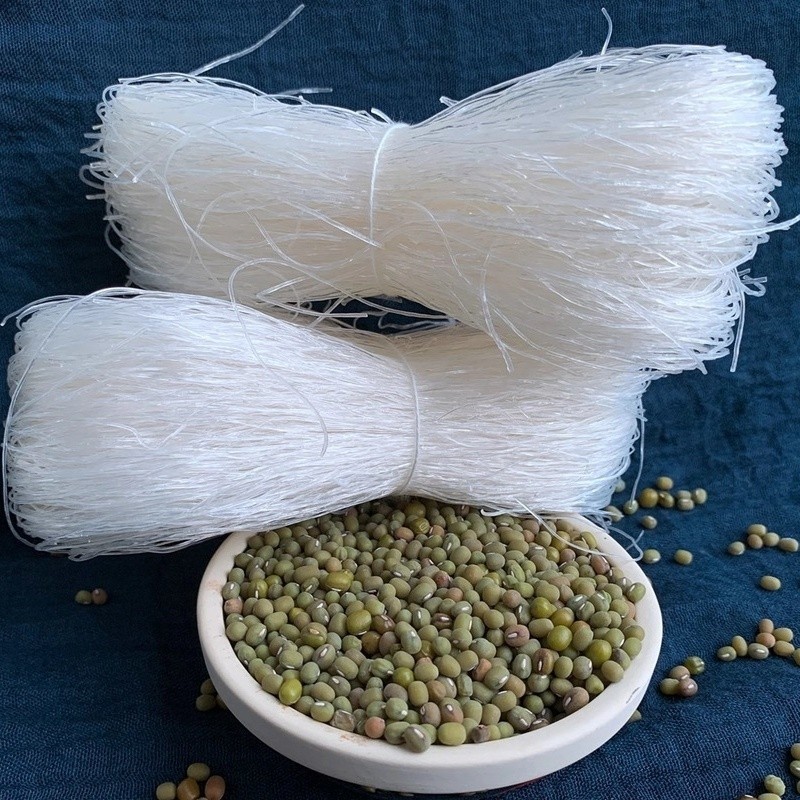Sometimes it is not easy to understand the menu of a foreign cuisine, especially when the name of the dish is extremely strange. Take “Tree-Climbing Ants (肂蚁上树)” for example. If you’ve never heard of this classic Chinese dish, you might be put off by its confusing, unappealing name. Let me introduce you to this super tasty dish and show you how to prepare it in your own kitchen.
This is a beautiful story about the name of the dish. In Guan Hanqing’s (ca. 1241–1320) play “ Tou E juan (The Injustice to Dou E) , ” the heroine’s mother-in-law was old, sick, and bedridden for days. Dou E decided to take care of her as best she could. They were very poor, but Dou E still wanted to cook delicious dishes for her mother-in-law with the wish to help her get well.


Dou E could only afford to buy a small piece of pork. When she got home, Dou E chopped the meat and stir-fried it with Chinese noodles . While serving this dish, the old lady asked why there were so many ants on it. The ants were actually ground pork, the tree branches are mung bean noodles, sprinkled with scallions representing the leaves of the tree. After this interpretation, the old lady gave the dish the name “Ants climbing the tree”. Nowadays, it is very popular and is one of the typical dishes of the famous Sichuan cuisine.


Different names for glass noodles.
Glass noodles are the main ingredient of this dish. They are crunchy and chewy, they become transparent after cooking, which is why they are called glass or cellophane noodles . In Chinese, they are known as Fen Si(粉经). They are round, very thin noodles made from mung bean starch. They are widely used in Chinese cuisine. You can find them in fried dishes, in stews, in soups, in salads or in fillings for dumplings. You can also use sweet potato noodles.

This is home cooking that you don’t see on most restaurant menus. The most important part of “tree climbing ants” is the ants – everything that goes into the wok must be finely ground. Garlic, ginger and scallions are chopped beforehand, but pork is traditionally ground twice: once before frying and again afterwards.

One thing to remember when cooking is that glass noodles soak up the sauce very quickly. If you like more sauce, you can increase the amount of chicken broth by up to 1 cup.

Mravenci lezoucí po stromě (Ma Yi Shang Shu 蚂蚁上树)
Ingredients
- 120 g sušených skleněných nudlí
- 200 g vepřového masa
- 1-2 ks jarní cibulky
- 1 lžíce nakrájeného zázvoru
- 1 lžíce nakrájeného česneku
- 1 lžíce fazolové chilli pasty doubanjiang
- 1 lžíce oleje
- 1 lžíce rýžového vína
- 1 lžíce tmavé sojové omáčky
- 2 lžíce světlé sojové omáčky
- 1 lžíce cukru
- 2-3 hrnky vody nebo vývaru kuřecího, nebo zeleninového (neslaného)
Instructions
- Nudle namočte do vody o pokojové teplotě asi na 10 – 15 minut, dokud nezměknou. Dávejte pozor, abyste je nenamáčeli příliš dlouho, protože by se rozmočily. Scedíme a odložíme na později.
- Ve woku rozehřejte olej na středně vysokou teplotu. Krátce orestujte pastu z chilli fazolí (Doubanjiang), poté vmíchejte mleté vepřové maso, zázvor, rýžové víno a sójovou omáčku. Smažte, dokud se dobře nespojí.
- Zalijte horkou vodou, nebo vývarem. Poté přidejte cukr, bílý pepř a nudle. Když nudle absorbují většinu vody, přidejte jarní cibulku, česnek a čerstvé chilli (pokud používáte). Promíchejte a vařte 30 sekund a poté ihned podávejte.
- Toto jídlo se obvykle podává s dušenou rýží spolu s dalšími pokrmy. Lze ovšem podávat i samostatně.






